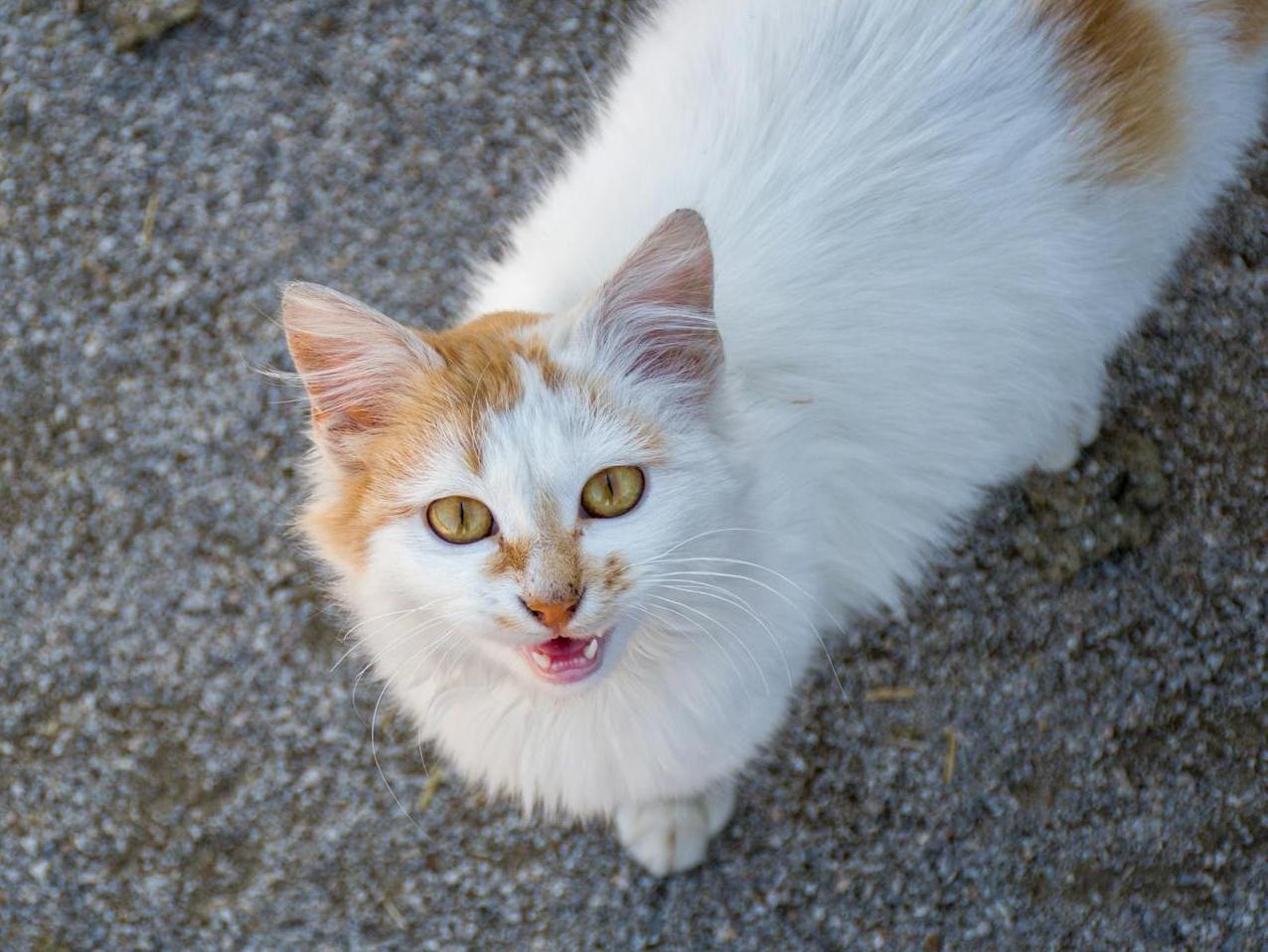Cats communicate with each other mainly using their senses of smell and sight and only rarely using sounds. Humans on the other hand are a very verbal species and it seems that during domestication cats exploited this preference. Many cat species meow while young, but only domesticated cats use this type of communication when grown and do so mainly when interacting with humans.
But do cats use different meows in different situations and can people understand what cats want to tell them?
Researchers recorded the meows of cats in different situations: when asking for food during feeding time (food related), when objecting to being petted or brushed (agonistic), when rubbing against their owner’s legs (affiliative), when asking to be let out of the house (negotiating obstacle) and when distressed while being in a car. Then they played the recordings of single meows or series of 2-6 meows to people unfamiliar with these specific cats and asked them to determine in which situation they were made.
On average people could determine the situation in which meowing was produced better than by chance, but only slightly so. They were better when the recordings consisted of multiple meows. People with more experience with cats (had a cat during or before the study and/or interacted with cats frequently) and the ones that reported a positive attitude towards cats were better at classifying meows, but mainly for agonistic and affiliative situations and only for single meows. The most accurate people were correct only 41 (single meows) or 50 (series of meows) per cent of the time.
Analysis of the duration and frequency of the recorded calls showed that they were quite variable and there was no clear distinction between meows from different situations. The variation was rather continuous with agonistic calls being on average longest and had the lowest fundamental frequency. This variability may explain why people were not very good at classifying meows.
In another study, researchers recorded cat meows in four situations: when being shut up in an unfamiliar room in their home, during positive interaction with the owner, during food preparation and when being presented with some food they couldn’t reach. People in the study listened to single meows of either their own cat or an unknown cat and tried to classify them. On average people were better at classifying calls from their own cats than from unfamiliar ones. None of the participants performed better than chance when classifying unfamiliar cats and 40% could classify correctly all the calls of their own cats. Potentially, the results might have been better if owners could hear a series of meows. In this study, people owned their cats for at least 6 months but it’s unclear what their lifelong experience with cats was.
In summary, it seems that there is some resemblance between cats’ calls in different situations and that having experience with cats may, to some extent, help understand unfamiliar cats. However, it appears that cats can produce their own unique set of situation-dependent meows, which their owners can learn to identify. Additionally, animals may adjust their calls based on the reactions of their humans. This way a secret language between the cat and its owner can develop.
Polską wersję tego wpisu możesz znaleźć tutaj.
Photo: Zeynel KAVURT, from Pexels.com


I must now record our cat in those situations and see if my husband can determine the difference!
I love it! Let me know the results of this experiment. (remember to make sure that the background noises are not giving hints 😉 )